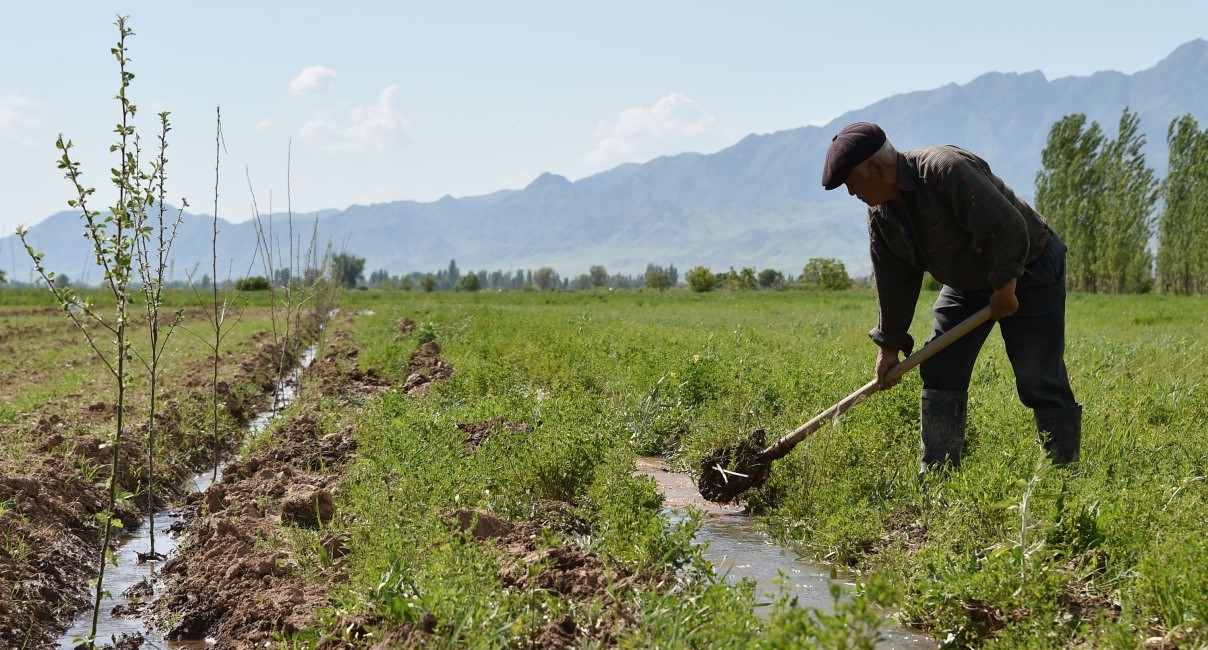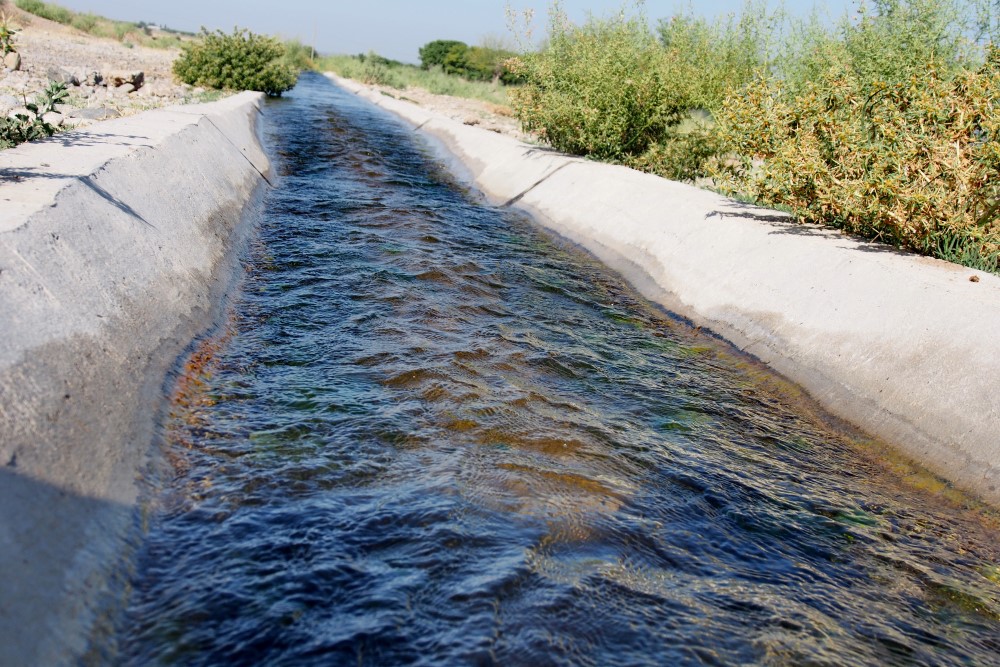
Every drop counts: FAO support for the implementation of an electronic irrigation water monitoring system in Kyrgyzstan
©FAO/Vyacheslav Oseledko
10/05/2024
Climate change impacts agriculture
Kyrgyzstan’s economy is heavily dependent on agriculture, the productivity of which largely depends on water availability. Much of that water is meltwater from the mountains, where climate change is having a serious negative effect on the environment. Glaciers are melting and snowfall is becoming inadequate to replenish the shortfall in the volume of water available to agriculture. Water has become an important issue for Kyrgyzstan and its farming communities.
For many years the people of Ak-Bashat used water from mountain streams to irrigate their fields and apple orchards. As a result of climate change, many streams have dried up and instead of blossoming gardens there are now sun-scorched hills.
“Water is life, especially for agriculture,” said farmer Talgat Zanzaliev, who due to water scarcity, has decided to rear cattle rather than tend crops. “Water depletion leads to disputes even between friends. If we do not use natural resources wisely, we may soon lose the green forest and water.”
Water is scarce not only in Ak-Bashat, but also in many other villages in the region. As a high-altitude country, Kyrgyzstan has been experiencing the effects of climate change earlier and more acutely than its neighbours. Changes in temperatures are leading to changes in precipitation patterns and more frequent peaks in temperature, leading to aridity and drought.


Left/top: Agriculture plays a major role in the lives of people in the Kyrgyz Republic, accounting for almost 18% of the country’s labour force. In recent years, water scarcity emerged as a critical risk factor for food security and livelihoods. ©FAO/Evgeniy Pechurin. Right/Bottom: The automated water accounting and distribution system was developed by scientists from the Irrigation Institute and the Design and Engineering Institute "Water Automation and Metrology," affiliated with the Water Resources Service of Kyrgyzstan. ©FAO/Alexander Shablovsky.
The use of innovative technology
Due to water scarcity, the Food and Agriculture Organization of the United Nations (FAO), the Government of Kyrgyzstan and scientists from the Irrigation Institute have joined forces to address the issue of field water accounting.
Ultrasonic sensors for measuring channel water levels have been installed at hydrological posts in several pilot areas of the country. Such digital technologies have not only helped in the rational distribution of water but also eliminated conflicts among farmers over this vital resource. The sensors emit ultrasonic pulses reflected on the water surface. Specialized equipment records crucial information, which is then transmitted to a computer. The system provides real-time data on the water level in channels.
The sensors were installed in pilot areas of the Naryn and Batken regions as part of the FAO project “Integrated natural resources management in drought-prone and salt-affected agricultural production landscapes in Central Asia and Turkey (CACILM-2)” and with financial support from the Global Environment Facility.
“Thanks to the automated water metering system, we know exactly where, when, and how much water is being used. In addition, you can see the total water consumption during a month or a quarter,” said Vitaly Shablovsky, who invented the system. “Previously, such data was collected manually at special gauging stations. But what happened between the checks was unknown. Water could be underdelivered, cut off and so on.”
The physical principles used by the Kyrgyz scientists are well-known, but their device turned out to be several times cheaper than imported equivalents. According to Vitaly Shablovsky, the application of this system in the context of water scarcity will ensure objective accounting of water use and development of the users' water-sustainable attitude to this diminishing resource
“The farmer doesn’t really care how much water there is in a river or a canal, but he does care how much water he gets to irrigate his field,” said Vitaly Shablovsky. “But to calculate the water balance, all hydro posts must be equipped with sensors. Only a systematic approach will achieve the expected result."
The experience gained from the use of this device in the pilot districts is being scaled up across the country. It is important that this initiative is actively supported by the state. Now an inventory of the main water canals and hydraulic structures, where water level gauges should be installed, is being developed.

Water and climate change are inextricably linked. Increasingly frequent and extreme weather events lead to water scarcity, but it is also reducing the predictability of water resources. Digital water management in pilot regions has proven efficient and scalable throughout the country and FAO is now working together with the government of the Kyrgyz Republic to scale up these effective practices. ©FAO/Vladislav Ushakov
Looking to the future
FAO is supporting several projects in Kyrgyzstan that address water scarcity and help villagers use water judiciously. For example, in the south of the country it introduced modern approaches, including the construction of artificial glaciers, to manage pasture resources sustainably and adapt to climate change.
The communal construction of an artificial glacier in Kashka-Suu village exemplifies local ingenuity. The resulting ice towers, accumulating in winter and melting in summer, yield a sustainable water source for irrigation and domestic use, benefiting numerous households and enabling extensive livestock grazing.
This technology offers long-term benefits, reducing the impact of climate hazards and generating income throughout the year. Local authorities, recognizing its efficacy, installed additional artificial glaciers through local funding sources.
For many rural people, water is often the primary production factor that needs to be secured. The integration of local experiences with innovative agricultural initiatives enriches strategies for climate change adaptation and enhances rural livelihood resilience in Kyrgyzstan.
